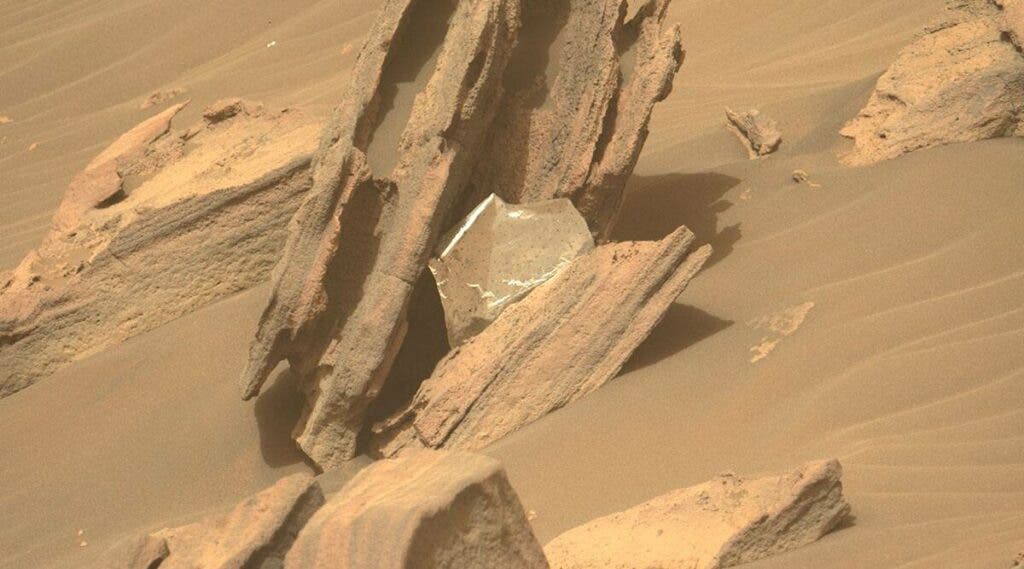Although no human has yet set foot on Mars, NASA’s Perseverance rover has found surprising, but all-too-human evidence of our visitations to the red planet: litter.

Where people go, trash follows. But it seems that it can even precede us! The team overseeing NASA’s Perseverance Mars Rover has announced on Wednesday via its Twitter feed that the space-faring robot has encountered human-generated litter on the red planet.
While the discovery does go a long way towards showcasing the effect we can have on the world around us, even in spots that we haven’t ourselves reached yet, it is quite an amusing discovery. Perseverance was sent to Mars to look for evidence of life, and today it did — it found evidence of the life that sent it there.
Where no man has littered before
“My team has spotted something unexpected: It’s a piece of a thermal blanket that they think may have come from my descent stage, the rocket-powered jet pack that set me down on landing day back in 2021,” the rover’s Twitter feed reads.
The team says they were “surprised” when the rover encountered the piece of thermal blanket where it did, as the site is around 2 kilometers (1.2 miles) away from where the rover landed on Mars. Thermal blankets are insulating coverings used to protect crafts during atmospheric descent and resemble padded metallic foil. Perseverance was wrapped up in this material before being loaded into the rocket that carried it to Mars.
It is yet unclear if the piece broke off during descent and landed at this site, or if it was blown here from the landing site by Martian winds.
This piece of thermal blanket joins the only other known man-made trash on Mars: the gear left behind when Perseverance landed, photographed by NASA’s Ingenuity Mars Helicopter back in April.
Funny as this news may be, it does however point to a very real, and growing issue. As we push further into space, we will invariably litter. Debris such as boots, parachutes, and even entire vehicles are already known to have been left behind from past missions. Closer to Earth, the Department of Defense’s global Space Surveillance Network currently tracks more than 27,000 pieces of “space junk” orbiting our planet, according to NASA. If this build-up continues, we may very well become stranded on Earth.
“Much more debris — too small to be tracked, but large enough to threaten human spaceflight and robotic missions — exists in the near-Earth space environment,” NASA explains. “Since both the debris and spacecraft are traveling at extremely high speeds (approximately 15,700 mph in low Earth orbit), an impact of even a tiny piece of orbital debris with a spacecraft could create big problems.”
The International Space Station is already at risk from these space debris, but there are almost no regulations protecting space from litter. As more and more humans make their way farther out into space, such issues will need to be addressed, one way or another.






